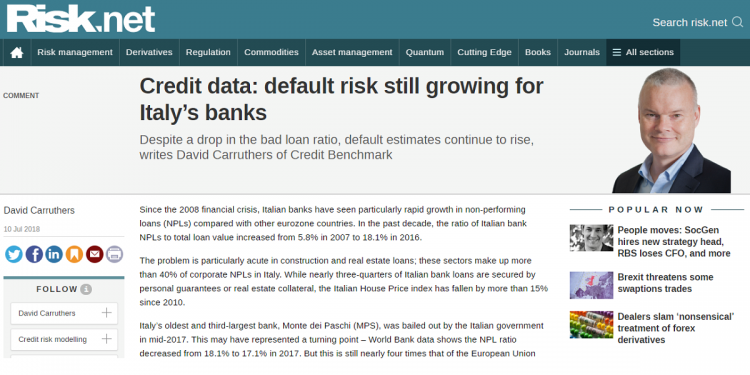
“Since the 2008 financial crisis, Italian banks have seen particularly rapid growth in non-performing loans (NPLs) compared with other eurozone countries. In the past decade, the ratio of Italian bank NPLs to total loan value increased from 5.8% in 2007 to 18.1% in 2016.”
“The problem is particularly acute in construction and real estate loans; these sectors make up more than 40% of corporate NPLs in Italy. While nearly three-quarters of Italian bank loans are secured by personal guarantees or real estate collateral, the Italian House Price index has fallen by more than 15% since 2010.”
In this series of monthly articles from Risk.net, David Carruthers, head of research at Credit Benchmark, discusses the growth of default risk for Italian banks, distressed debt in Sub-Saharan Africa, the Global 500 vs the US 500 and SME corporate credit distribution in addition to global credit industry trends.
Read the full article here or in the July edition of Risk Magazine.